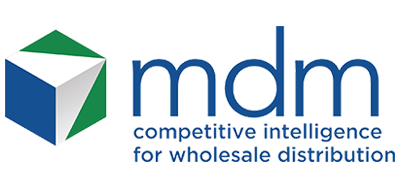Industrial products distributors have faced significant challenges in recent years: spikes in demand, inflation and supply chain bottlenecks have each wreaked havoc. In 2023 a new challenge is emerging: downward pricing pressure as the construction market cools and wholesale price inflation slows.
Consider this quote from Webb Analytics President Craig Webb from a recent episode of the B2B Reimagined podcast focused on the 2023 forecast for building materials and construction: “The topline matters a lot less in stagflation or recession than the bottom line. It’s in your interest to do every little minimal thing you can that gets you an extra penny here or an extra dime there.”
Taking a thoughtful look at the impact that pricing strategies have on the bottom line will be critical during the rest of 2023 and beyond. Industrial distributors should re-consider cost-plus pricing models, look closely at how much of their system pricing is customer-specific, and reduce over-discounting in the field by providing optimized discount guidance. Let’s dig in.
Ditch the Cost-Plus Pricing Model
Inflation has provided air cover to raise system prices, but as interest rate hikes soften demand and downward pricing pressure sets in, distributors using an overly broad cost-plus pricing model risk cratering margin. The reason? Distributors that have taken this “peanut butter spread” approach, wherein prices are raised uniformly across the board, will find their margins plummeting if costs drop and they aren’t equipped to surgically, slowly and strategically lower prices.
That’s certainly not the most profitable of strategies, but it may not be avoidable if the go-to tool to update system pricing is a spreadsheet. Rather than dropping prices quickly in one decrease, consider a more nuanced approach in which smaller price decreases are implemented in a more agile and intentional manner. This scenario allows you to retain more margin – and if a recession is on the horizon – success means holding onto pricing and margin gains for as long as possible.
Optimize the System Pricing Mix
Enabling sales teams with relevant, consistent prices is a significant challenge in this project-driven industry. Inflation and frequent cost changes have stressed pricing processes that lack visibility and a method to quickly update prices when costs change.
Without system prices that sales teams find relevant, it’s common for a proliferation of unwarranted customer-specific pricing to be created. The issue with too much customer-specific pricing within a business is that, once set, it is difficult to update. Typically, these customer-specific price records can number in the thousands and are locked away in rigid ERP systems. As these records are created and pricing control becomes increasingly decentralized, an organization’s ability to execute price updates rapidly deteriorates.
Here, industrial distributors have a significant opportunity: Centralize pricing with a dedicated system of price optimization and management. Distributors can easily shift unnecessary customer-specific prices onto matrix pricing, and more easily mass update customer-specific prices to more profitable levels. Take the improvements a step further with a tool for agreement management to enable sales reps to proactively update customer-specific pricing agreements.
Reduce Deviations with Smarter Discount Guidance
Finally, let’s cover optimized discount guidance for project-based businesses and spot quotes. Here, winning the bid is critical and negotiations are common. However, if a recession is on the horizon, a plan to win the bid today and figure out the margin implications later is likely to backfire.
Over time, the sales team loses confidence that overly broad system prices will be relevant to customers and increasingly deviate from it. Companies, then, grant autonomy to branches and sales reps to deviate from system pricing and discount quotes in order to win the bid. Without market-aligned price guidance to rely on, over-discounting is prevalent.
Instead, provide sales teams with override guidance with guardrails to reduce over-discounting when a deviation is necessary. Price optimization – a broad term that essentially boils down to using advanced math and analytics to set prices that optimize for revenue or margin, and understands how customers will respond to a change in price – can give sales teams the guidance they need to make sound pricing decisions in the field.
Given that price optimization considers many complex factors across a business, it imparts the knowledge of your best sales reps into every price point. It’s thinking like your best salesperson, considering the factors he or she would and delivering transparent, market-aligned price guidance that meets the margin goals of the company. This guidance provides an optimal price range from which to negotiate.
Putting it into Practice
For many years, distributors only had to update prices in response to supplier cost changes once or twice a year. Increasingly, however, distributors are faced with monthly and often weekly cost changes. For one building products distributor, this increase in frequency led to margin leakage, as the process to update prices took too long and the pricing and sales team failed to capture the across-the-board price increases in the market.
The company worked with Zilliant to update prices more quickly as costs changed, and optimize its system prices while providing sales reps with negotiation guidance where deviations were necessary. Not only was the company able to increase system price adoption and reduce deviations, but it also measured a 120 basis point margin improvement within two quarters. That’s the power of an intelligent approach to pricing!
In conclusion, industrial distributors have an opportunity to significantly improve margins by looking across their price waterfall and optimizing each element to ensure sales reps are able to quote prices that meet company margin objectives and still win the business.



